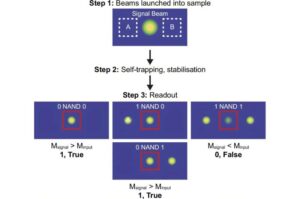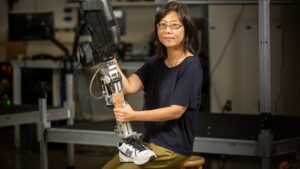
A recent study published in Nature Communications reveals that researchers from the University of Michigan and the Universitat Politècnica de València have developed a novel approach to understanding atmospheric turbulence, a phenomenon that complicates aviation and various engineering processes. By utilizing explainable artificial intelligence (AI), the team has identified key regions within turbulent flows, potentially transforming how turbulence is predicted and managed.
Atmospheric turbulence is notorious for causing rough flights. Despite its prevalence, the chaotic nature of turbulent flows remains an unsolved problem in physics. The findings from this study could enhance forecasting methods, allowing pilots to navigate around turbulent areas, thereby minimizing passenger injuries and structural damage to aircraft. Furthermore, the insights gained may enable engineers to manipulate turbulence more effectively, enhancing industrial mixing processes or improving fuel efficiency in vehicles.
Sergio Hoyas, a professor of aerospace engineering at the Universitat Politècnica de València and co-author of the study, commented on the implications of this research: “For more than a century, turbulence research has struggled with equations too complex to solve, experiments too difficult to perform, and computers too weak to simulate reality. Artificial Intelligence has now given us a new tool to confront this challenge, leading to a breakthrough with profound practical implications.”
Traditional methods for modeling turbulence often rely on physical equations to identify influential elements or observable structures like vortices. The innovative approach taken by this research team shifts focus from merely predicting turbulence to achieving a deeper understanding of the entire flow system. By iteratively removing data points to assess their significance, the researchers found that vortices play a lesser role than previously thought, particularly far from the wall—the boundary separating turbulent and smooth air. Instead, they discovered that Reynolds stresses, generated by the interaction of fluid speeds, were most significant near the wall and at greater distances, while streaks of fast and slow-moving air were influential at intermediate ranges.
Ricardo Vinuesa, an associate professor of aerospace engineering at the University of Michigan and co-corresponding author of the study, explained, “If you put all the classical views together, they get closer to reconstructing the whole story. If you take each of the classical views individually, you get a partial story.”
The mathematical complexity of turbulence has long posed challenges for researchers. The governing equations, known as the Navier-Stokes equations, work well for smooth flows but become computationally intense for turbulent conditions. The chaotic nature of turbulence leads to significant velocity gradients and a fractal-like structure, complicating simulations. The Clay Mathematics Institute has even labeled this problem as one of the seven Millennium Prize Problems, offering $1 million for a solution demonstrating a smooth solution’s existence and uniqueness.
While direct numerical simulation can accurately model small sections of turbulent flows, it is often prohibitively expensive for larger-scale applications. For instance, simulating just one second of flight for an Airbus A320 in cruise conditions would require the fastest supercomputer approximately five months to complete, utilizing memory comparable to the data transferred across the entire internet in a month.
To advance their research, the team combined direct numerical simulation with explainable AI techniques. They initially trained an AI model using simulation data to predict turbulent flows. Subsequently, they applied Shapley additive explanations (SHAP) to analyze the significance of each input in the predictive model. This method is akin to evaluating individual players in a soccer team to discern their contributions to overall performance.
The results were promising; the integration of SHAP with deep reinforcement learning outperformed traditional approaches, achieving a remarkable 30% reduction in drag on an aircraft wing. This breakthrough allows for a precise identification of critical structures within turbulent flows, enabling targeted control strategies to minimize drag, improve combustion efficiency, and reduce urban pollution effectively.
Andrés Cremades, an assistant professor at the Universitat Politécnica de València and co-corresponding author, noted, “This means we can target these regions to develop control strategies that reduce drag, improve combustion, and decrease urban pollution more efficiently, as we can now anticipate the dynamics of the system.”
The methodology developed through this research has applications extending beyond turbulence, with the potential to optimize various physics-related problems. Vinuesa remarked, “For any physics problem, you can identify the features that are important and the ones that are not, and use that for optimization, control or other applications down the line.”
This groundbreaking study not only sheds light on an enduring challenge in fluid dynamics but also opens new avenues for practical applications across multiple industries. The research team’s innovative use of AI marks a significant step forward in understanding and managing the complexities of turbulence.






